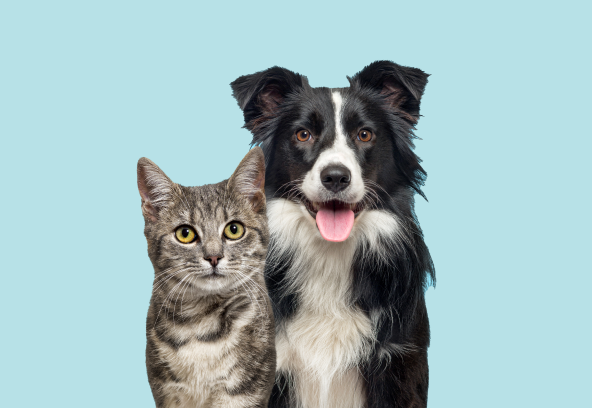
Create the Ideal Environment for Your Rabbit

If you’ve been thinking about getting a rabbit, here’s how you can provide the ideal environment to keep them safe, healthy and happy.
Rabbits make great pets, but before you get one, you’ll need to carefully consider where you keep it. While you can keep rabbits indoors or outside, you’ll need to do a little bit of work to ensure their environment is safe and comfortable and appropriate for your pet.
Here are five tips to create an ideal environment for your rabbit.
1. Space
Rabbits are incredibly active, so they need plenty of space to roam about, explore and even dig. If you’re keeping your rabbit in a covered hutch, make sure the roof is high enough that they’re able to stand up on their hind legs without their ears touching the ceiling.
Their sleeping spot should be big enough for them to be able to fully stretch out but also cosy enough that they don’t get cold when the temperatures drop.
2. Security
Rabbits are prey animals in the wild, so it’s essential they feel safe in their home environment. This is especially important if you’ve decided to keep them outside. Their hutch should be hardy enough to protect them from a wandering dog or feisty cat.
Your rabbit’s environment also needs to be safe so it can’t harm itself on any sharp edges or get stuck in a small space. And, if you allow them to roam around indoors, you need to make sure they can’t nibble on electrical cords and get zapped.
3. Comfort
Not too hot, not too cold, not too dry, not too humid, well ventilated but not draughty. While it may sound like an elaborate version of the Goldilocks fairy tale, it’s important that your rabbit’s environment is in the right temperature range and they’ve got protection from drafts and the elements. An area that’s too damp or draughty, or has poor ventilation, is much more likely to cause your rabbit to become ill.
If your rabbit’s hutch is kept outside, be sure to keep the seasons in mind when deciding where to place it. It needs to be protected from harsh weather, like severe rain, heat and cold. It will help if the hutch can be easily moved around so your rabbit can access new grass, get shade when it’s hot, and stay dry when it’s raining.
4. Accessibility
Whatever environment you decide to provide for your rabbit - whether indoors or out - your rabbit needs to have free access to water, a place to sleep, and a place to hop around and get some exercise. For a guide on size, your rabbit should be able to make at least three hops from one end to the other.
Ideally, you’d also have a large ‘run’ where your rabbit can roam about and get plenty of exercise. Extras like platforms that require them to climb or hop and down are also great, as these will help your rabbit maintain their muscle and bone strength.
5. Cleanliness
Finally, you’ll need to ensure your rabbit’s environment is clean. This includes removing any droppings from their hutch and run, regularly swapping out their bedding, and cleaning their living area at least once a week. It’s also important that your rabbit has access to a place to toilet. A litter tray that’s easily accessible and filled with shredded paper or non-clumping litter is a good idea, making it easier to clean.
While it may seem a little more involved than if you were getting a cat or dog, making sure your rabbit has a nice environment will keep them safe and healthy so you can enjoy their company for years to come.

